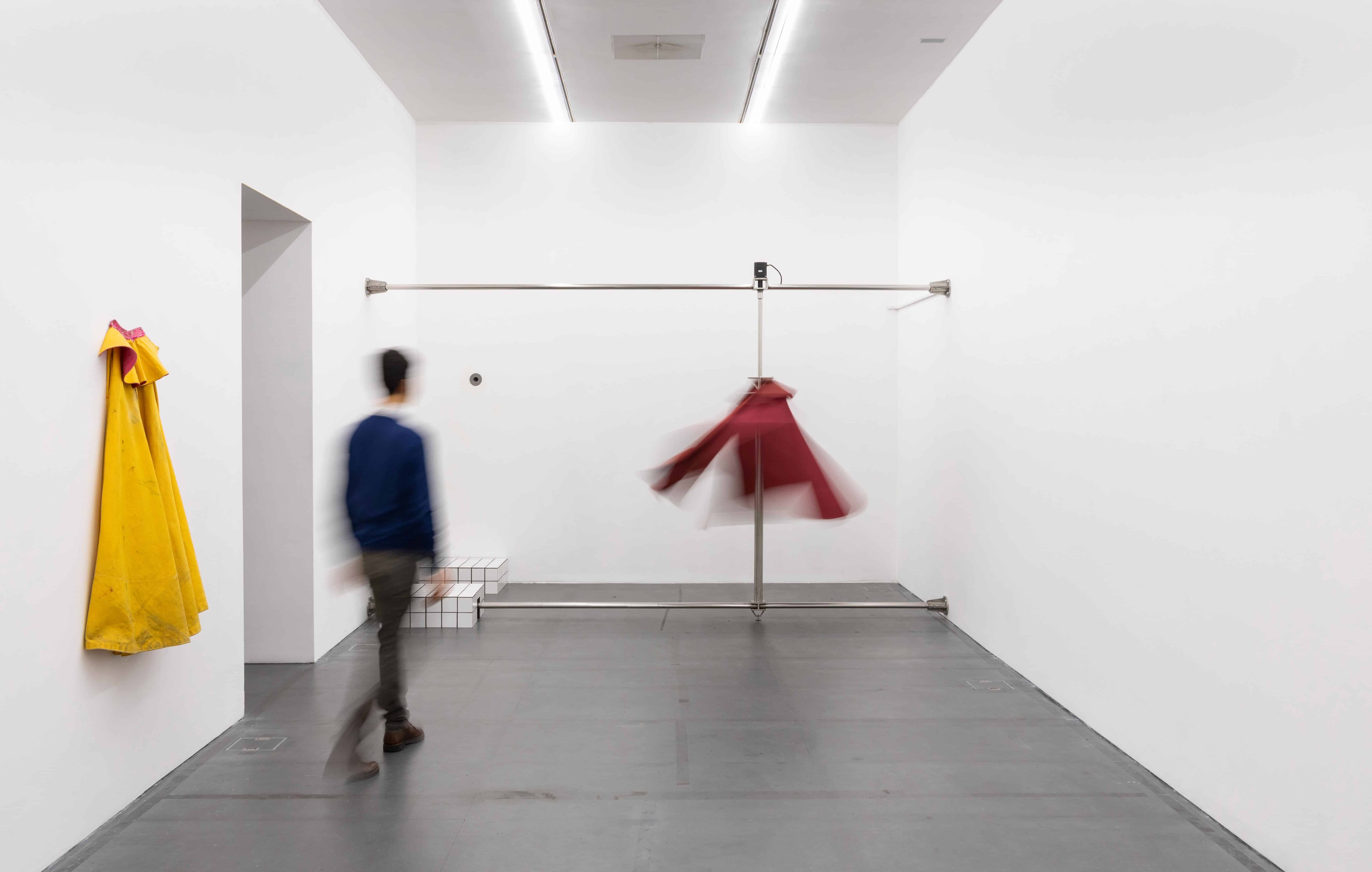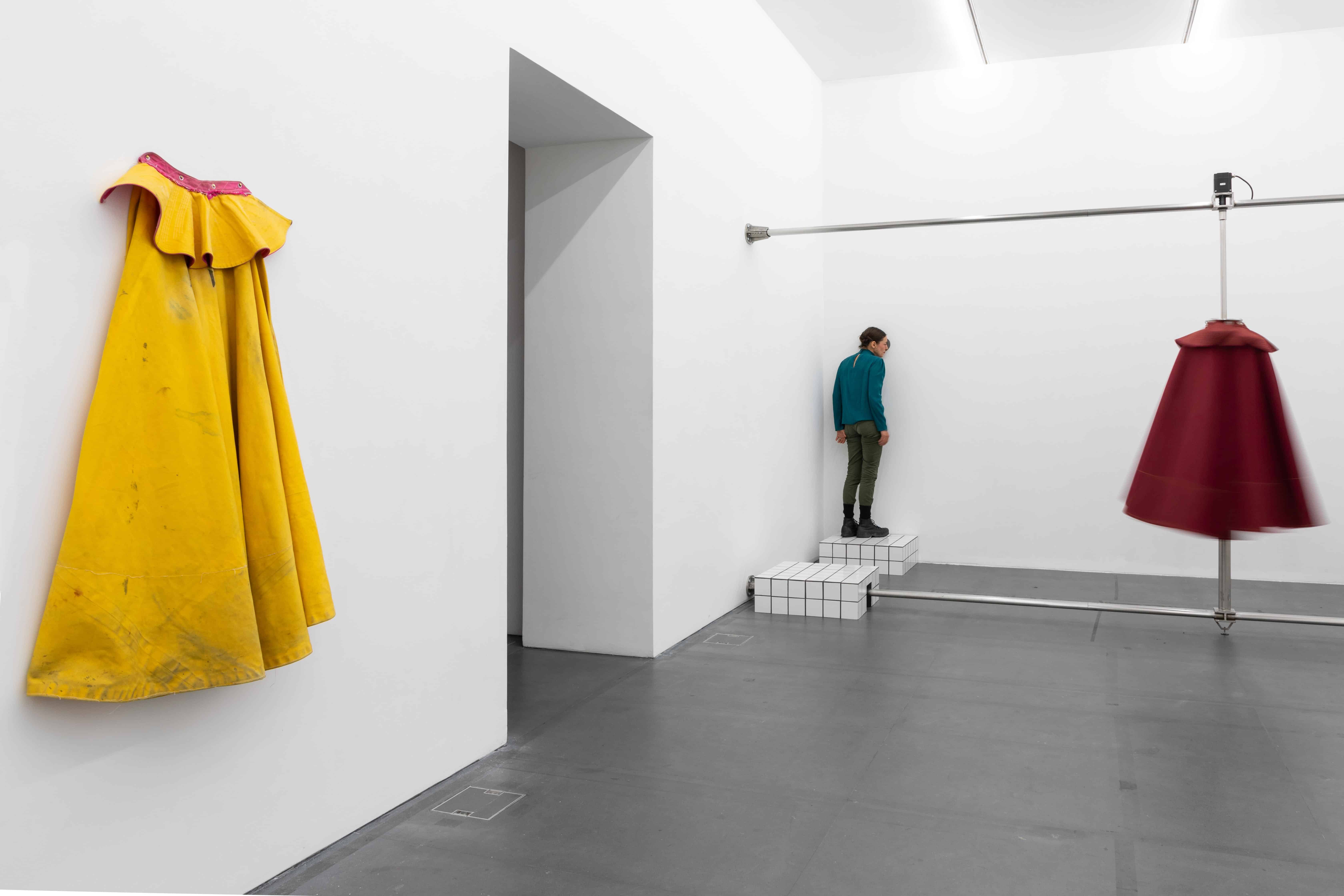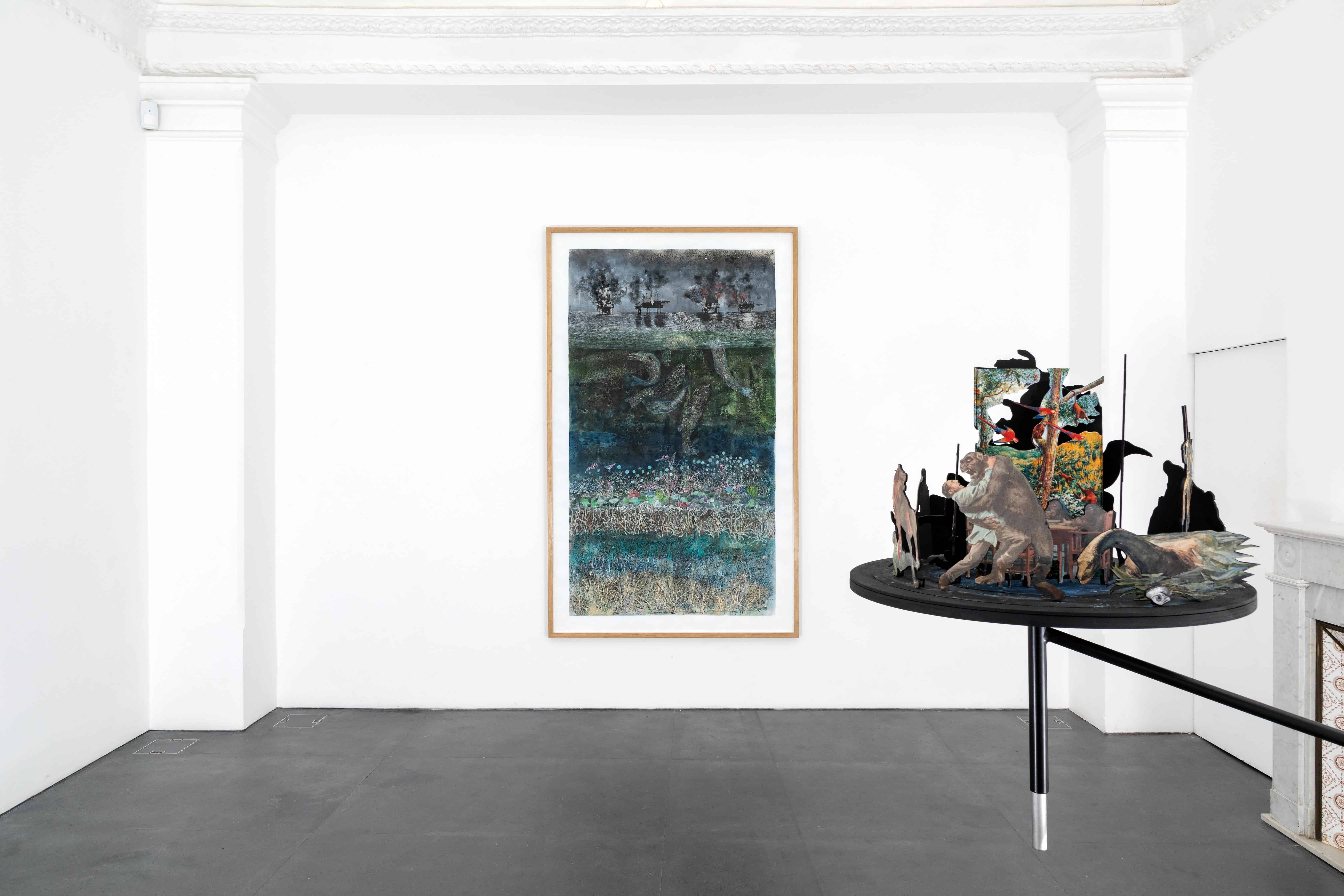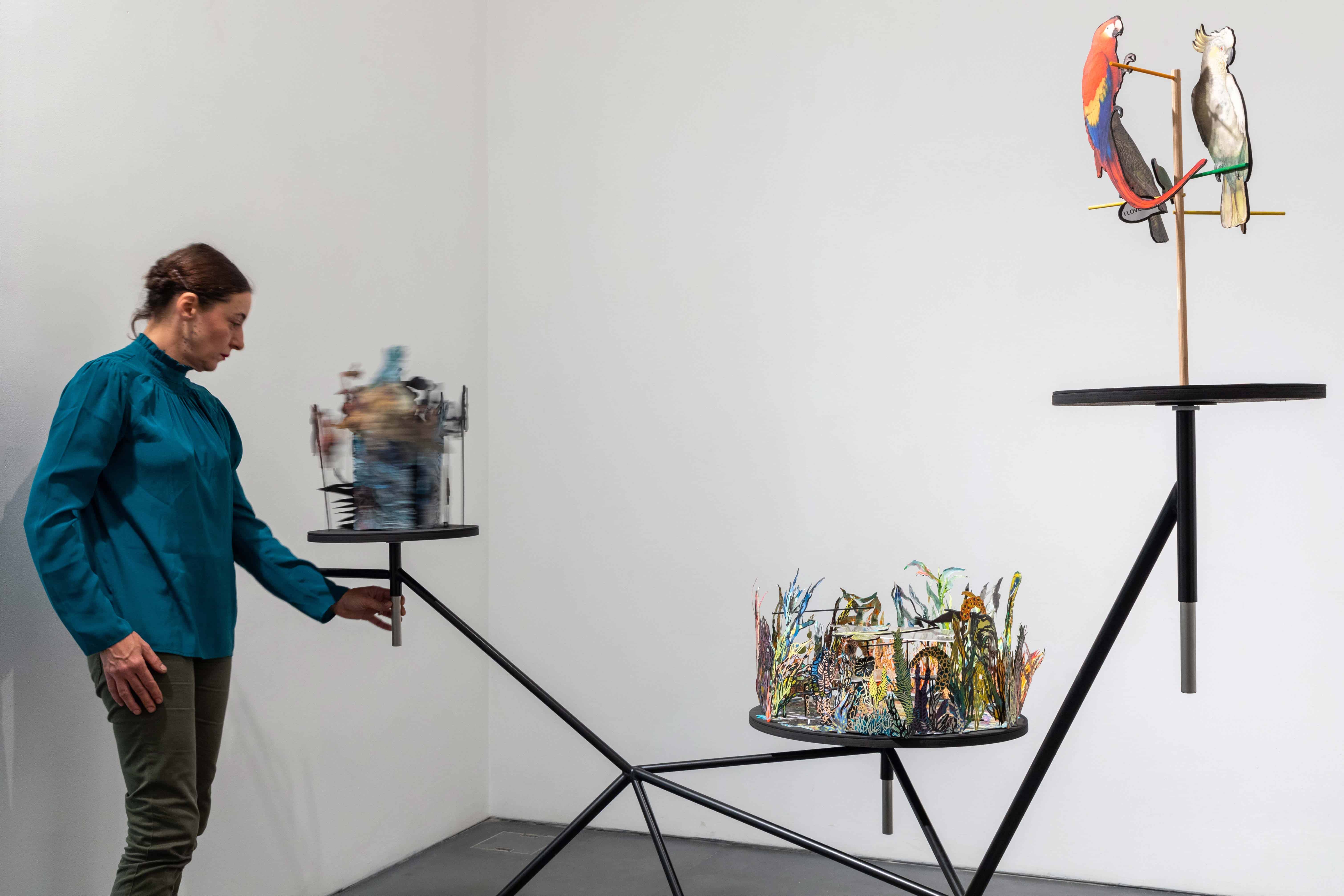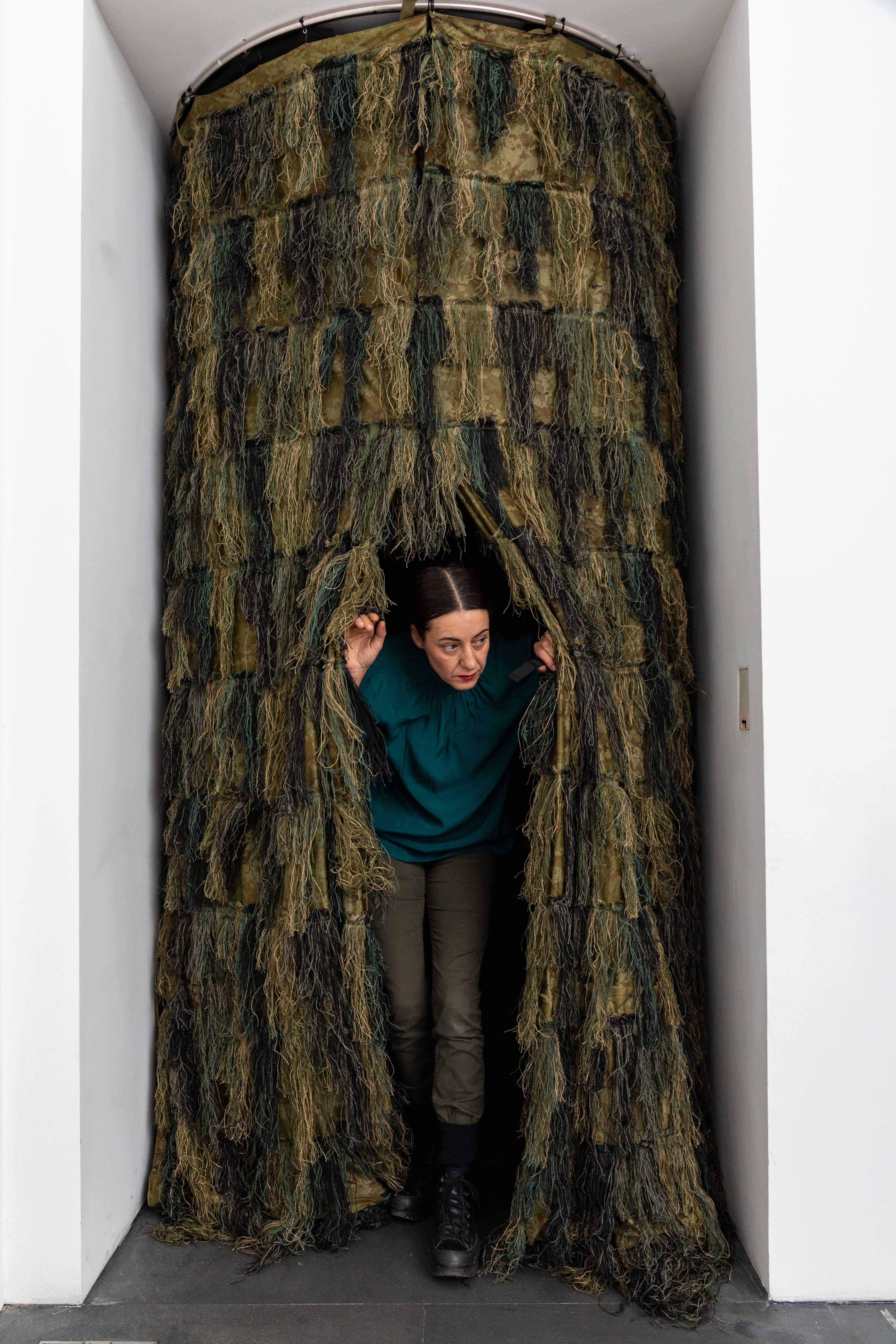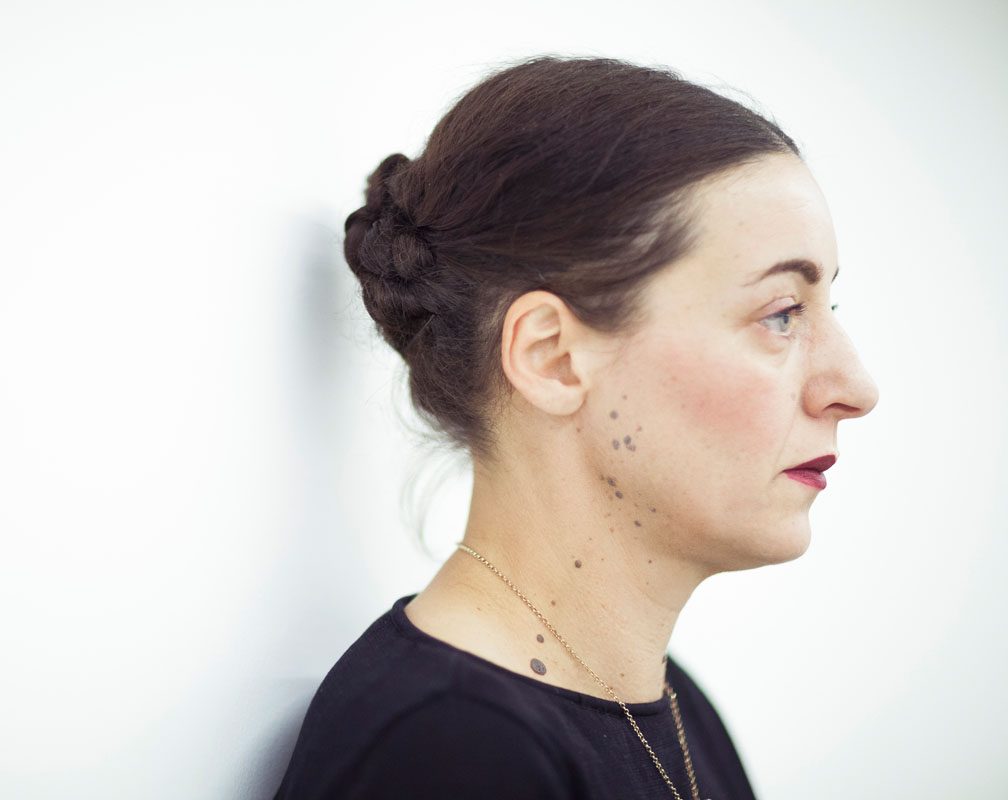The Lia Rumma Gallery is delighted to present Marzia Migliora Fame d’aria, a solo show that opens on Sunday 30 October 2022 at 12.00 pm at its Naples branch.
The project presents seven new works by the artist who has recently explored a multispecies approach in order to create new sensitive relationships, imagining how things might appear from the perspective of animals and plants.
The title of the exhibition refers to the concept of hunger, a human instinct that has had an impact on, and continues to have an impact on, the dynamics of survival, appropriation and “extractivism”, treating Earth as a bundle of resources. However, in this context, she turns her attention to the hunger for air, an allusion to the medical condition that can precede death but also, more generally, to the condition of widespread asphyxia which needs to be left behind as it is an indicator of a level of toxicity that makes life impossible; it is a final cry of alarm before she turns her attention elsewhere, to survive by expanding our perception towards the emergence of new relationships between humans and non-humans.
The works presented in the exhibition include the sculpture Lek which conveys a sense of urgency by being based on assisted breathing, demonstrated by an assemblage seemingly put together in an emergency, featuring pieces that are heterogeneous. In biology, a lek is a space or gathering devoted to courtship in which the males of a species engage in competitive displays to entice females. In this work, the amorous encounter is shown with the impossible attempt to create a machine that makes it possible to hear the breathing of fish, inaudible to the human ear because it has a frequency of 40 hertz, but is based on a procedure of extracting oxygen from water through the gills, emulated here by the medical respirator, sadly very pertinent during an era of pandemics.
At the centre of the exhibition is the work Danza per capote de brega, another kinetic sculpture that seeks to give shape to a tension steeped in the violence created between a bull and a bull-fighter through the moving and waving of the colourful cape used in the corrida which flutters like a membrane between the life and death of the individuals involved in the choreography.
By contrast, Run Fast and Bite Hard (entre chain et loup) is a work consisting of two observation posts that make it possible to spy on the interior of a room (otherwise inaccessible) and represents a great act of deception. These two mirages, one visual and the other sonorous, create the illusion of being able to enter a wood where, by means of a video made using a thermal imaging camera, it is possible to observe wolves passing by or to listen to the putative presence of various birds.
In the final installation H2O - O2 the relationship between humans and animals is interpreted through the depiction of this interaction that appeared in the weekly magazine La domenica del corriere. The three-dimensional collages on the tables are made from news articles in which animals of many different species are portrayed as monsters that stand in the way of modernity
The exhibition culminates in number #50 of the series I paradossi dell’abbondanza,. In this series, a multicellular multispecies universe – which the artist has taken from various handbooks based on anatomical studies conducted since the nineteenth century on all the species of the five kingdoms of living creatures – is made up of tissues, organs and cells. They have been assembled using original compositions that do not correspond to the logic of capitalist production which has classified them through the prism of intensive farming, the extraction of resources that cause pollution or large-scale hunting. These new forms, which are completely original and are the result of relationships put together from scratch, shed light on a possible way forward where, as the American philosopher Donna Haraway has reminded us, “composting rather than accumulation is key” and where death, which is a thread running through many of her works, is treated as a “practice of learning to live and die well with each other in a thick present”.
From an essay by Matteo Lucchetti
